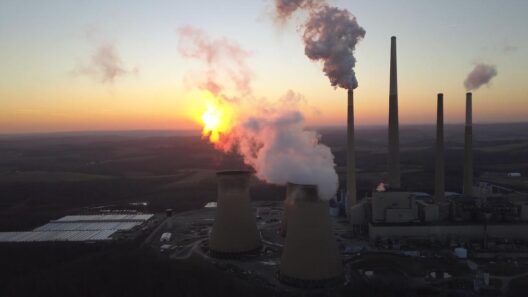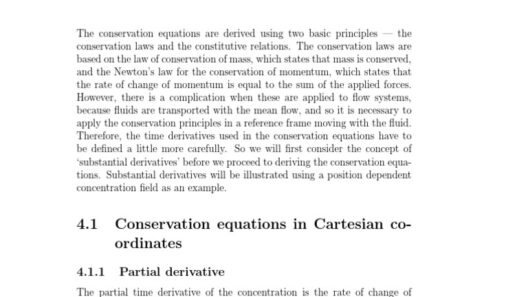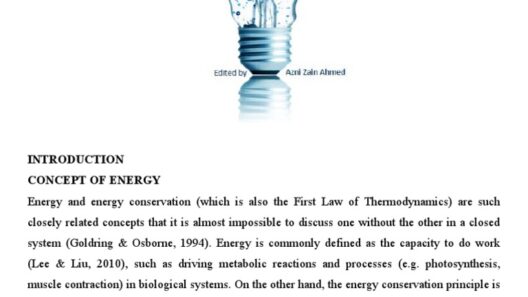Conservation of energy is a fundamental principle in physics that asserts energy cannot be created or destroyed, only transformed from one form to another. Have you ever wondered, if you drop a ball from a height, where does the energy go? This playful question not only piques curiosity but also opens the door to a fascinating challenge: understanding how to solve problems related to conservation of energy, ranging from beginner levels to advanced complexities.
To tackle these problems effectively, one must start with the basic concepts. At its core, the law of conservation of energy implies that the total energy within an isolated system remains constant. One of the primary forms of energy encountered in these problems is kinetic energy (KE), which is given by the equation:
KE = 1/2 mv²
where m represents mass and v is velocity. The other essential form is potential energy (PE), notably gravitational potential energy (GPE), calculated as:
PE = mgh
Here, g denotes the acceleration due to gravity and h signifies the height above a reference point. The beauty of these concepts lies in their interplay—when an object falls, its potential energy converts into kinetic energy, leading to intriguing scenarios.
To illustrate this, consider a simple problem: a ball of mass 2 kg is dropped from a height of 10 meters. How would you approach this? First, compute the potential energy at the height of 10 meters:
PE = mgh = 2 kg * 9.81 m/s² * 10 m = 196.2 J
This value indicates the energy the ball possesses while held at that height. As it descends, this potential energy will be transformed into kinetic energy just before hitting the ground. Using conservation of energy principles, at the point just before impact, all potential energy will have been converted to kinetic energy, yielding:
KE = PE = 196.2 J
Knowing the kinetic energy, you can then find the velocity of the ball just before impact by rearranging the kinetic energy formula as follows:
v = √(2KE/m) = √(2 * 196.2 J / 2 kg) = √(196.2 m²/s²) ≈ 14.0 m/s
Now, this is a relatively straightforward problem. As we expand our exploration into more advanced territory, challenging ourselves with different scenarios, we must account for additional variables such as friction, air resistance, and multiple forms of energy.
Consider a more complex situation where a roller-coaster car descends from a height of 15 meters, encounters a loop-de-loop, and has a combined mass of 500 kg (including passengers). To analyze the energy transformations throughout the ride, we begin by determining the potential energy at the start:
PE_initial = mgh = 500 kg * 9.81 m/s² * 15 m = 73575 J
Upon reaching the bottom of the initial descent, all potential energy has transformed into kinetic energy. Assuming no energy losses to friction, the total kinetic energy at the lowest point is also:
KE = 73575 J
As the coaster ascends towards the loop, this kinetic energy begins to convert back into potential energy. Assuming the maximum height of the loop is 5 meters, the potential energy at this height becomes:
PE_loop = mgh = 500 kg * 9.81 m/s² * 5 m = 24525 J
As it climbs, you can deduct the potential energy from the initial kinetic energy to find the kinetic energy at the top of the loop:
KE_loop_top = KE_initial – PE_loop = 73575 J – 24525 J = 49050 J
This further showcases how to disassemble a problem layer by layer, revealing not just the calculation aspect, but also the conceptual understanding of energy transformations.
As we shift gears into even more advanced problems, introducing concepts like conservation of mechanical energy in non-ideal systems becomes paramount. Air resistance, for example, complicates these calculations significantly. When addressing air resistance, it is crucial to incorporate drag force. It can often be modelled as:
F_drag = 1/2 * C_d * ρ * A * v²
where C_d is the drag coefficient, ρ is the air density, A is the cross-sectional area, and v is the velocity. This force works against the motion of the object, resulting in a loss of mechanical energy that must be accounted for in our calculations, creating a fascinating layer of complexity.
So, how does one effectively approach problems of this nature? A systematic methodology proves beneficial:
- Identify Known Values: Start with the given quantities and conditions of the problem.
- Energy Calculations: Assess all forms of energy involved, converting energies from one type to another as necessary.
- Account for Non-Conservative Forces: Include any forces acting against the system, such as friction or air resistance, that dissipate energy.
- Apply Conservation Principles: Utilize conservation of energy equations, keeping transformations in mind.
- Evaluate Results: Compare calculated results with unitary values such as energy and velocities to ensure logical consistency.
By following these steps, the pursuit of solving conservation of energy problems—regardless of their complexity—becomes a structured endeavor, culminating in a comprehensive understanding of the fascinating world of energy and motion. The more you experiment with various problems, the more adept you’ll become at visualizing energy transformations in the physical world around you.
In conclusion, from the simplicity of dropping a ball to the complexity of roller-coaster physics and the subtleties of forces at play, mastering the principles of conservation of energy in physics can be rewarding both intellectually and practically. Are you ready to challenge yourself with these concepts, turning theories into tangible understanding? The journey through solving conservation of energy problems is not just about calculations—it’s an exploration of the interactions that define our universe.








